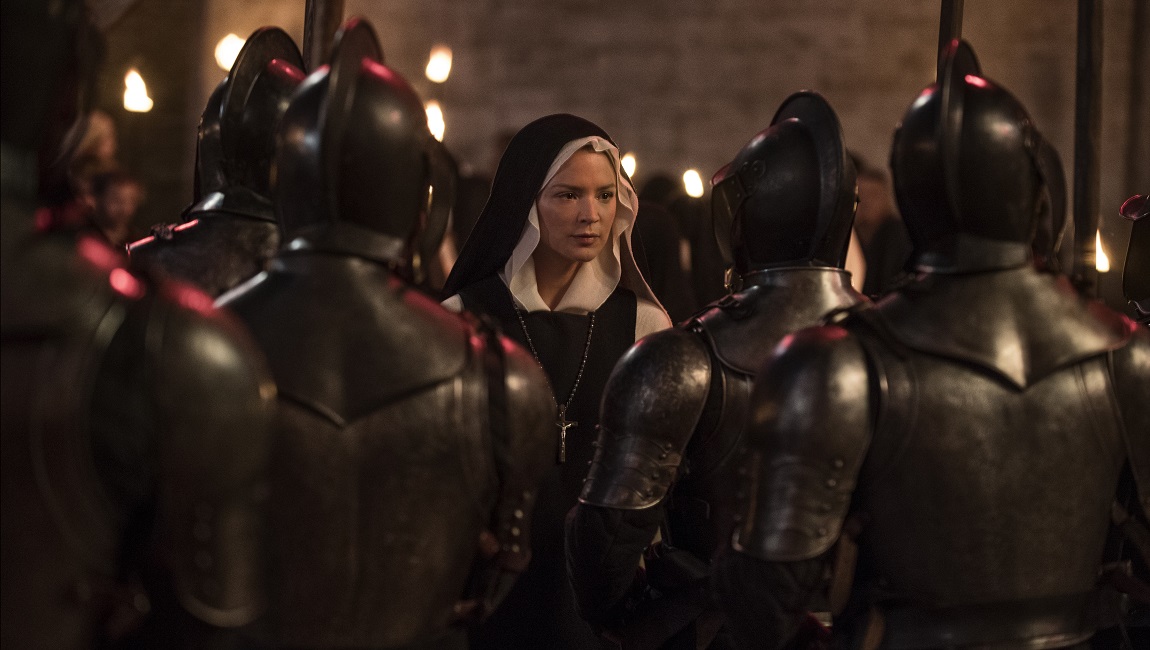With a title sequence that references both Stan Brakhage and To Kill a Mockingbird, David Fincher’s Se7en announces itself as a decidedly progressive genre text. Throughout his career, but particularly in this early masterwork, Fincher’s consumed the fleeting styles of Hollywood and mainstream film — in this case, film noir — and redirected them, turning them into something altogether different yet somehow recognizable, even classical, if only because they share the immaculate polish of works by studio greats like Otto Preminger. When talking about Se7en, it’s important to start from the ground up, or, more specifically, from the city streets outward. It isn’t enough to say that the film’s nameless, daunting metropolis is another character in the story. Much more than that, it is a supernatural domain, familiar in all the ways a city is familiar — alleyways, concrete, construction awnings, people, traffic, noise — but abstracted to the point of seeming otherworldly, not merely symbolic but the literal manifestation of a mindset. Indeed, despite its characteristically harsh verisimilitude, Fincher’s film represents reality in such a way that turns perception and space, and by expansion the film itself, into ideology. Even the interiors, with their cloistered walls and diametric infrastructures, can be viewed as extradiagetic. In their pursuit of enigmatic murderer “John Doe” (Kevin Spacey), who models his killings after the seven deadly sins, intrepid detectives Somerset (Morgan Freeman, seasoned and world-weary) and Mills (Brad Pitt, young and go-getting) become veritable tour guides. Traversing derelict buildings and rainy alleyways, human detritus and noir ephemera, they turn their investigation of a crime into an investigation of an entire film style.
Indeed, despite its characteristically harsh verisimilitude, Fincher’s film represents reality in such a way that turns perception and space, and by expansion the film itself, into ideology.
Se7en is also an investigation of morality in a world of seemingly endless violence and transgression, though it wisely refrains from any kind judgment. More than anything, the film seems to confront morality on all sides, denying the audience a convenient resolution and leaving them in a sort of suspended mindset, the kind seemingly inhabited by the characters. Somerset’s final line — “Ernest Hemingway once wrote, ‘The world is a fine place and worth fighting for.’ I agree with the second part” — is also the film’s only use of voiceover narration, something the studio demanded after test audiences complained about the dark ending, designating the character as the least unreliable narrator in a story full of them. But his words, in all their pragmatism and backhanded hopefulness, do not mitigate the tragic impact of the killer’s maniacal plan come to fruition. His belief that human violence is deplorable but unstoppable is the definition of pessimism, effectively disabling the heroic notion of his character archetype and smearing his authoritative viewpoint. Because of the unique and cynically playful story structure, it’s John Doe, the source of violence so aggressively human that it transcends all notions of “humanity,” who has the most convincing voice in the film, if only because he sees an end to violence. These shifting modes of characterization and perspective are an old noir gambit, but in Fincher’s hands, they’re useful tools in exploring the shifts and workings of genre art, the mechanisms that turn stories into states of mind and cinema into ideology, and they’re put to inspired use in Se7en.
Part of Kicking the Canon – The Film Canon.







